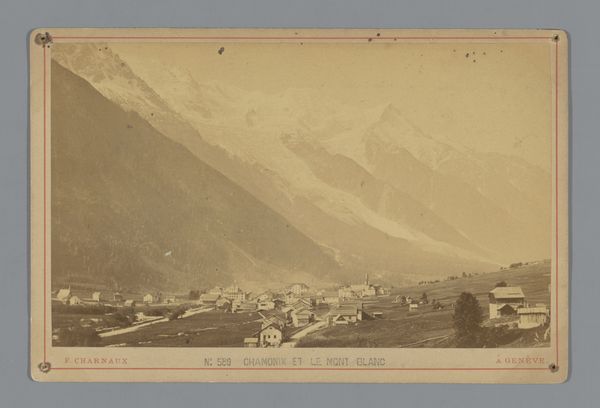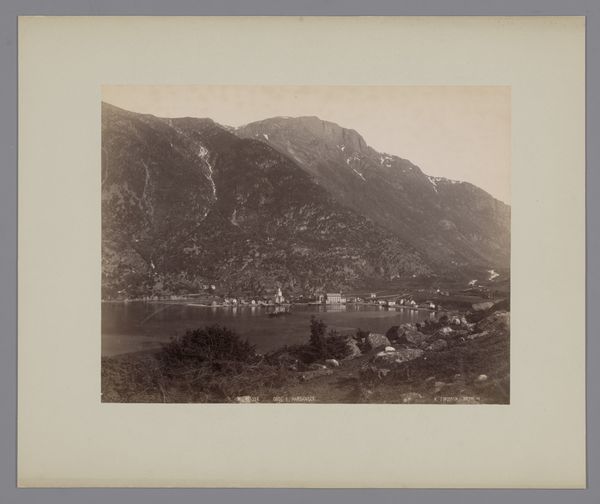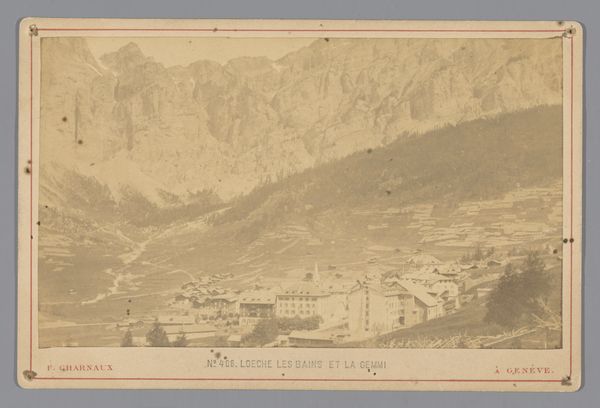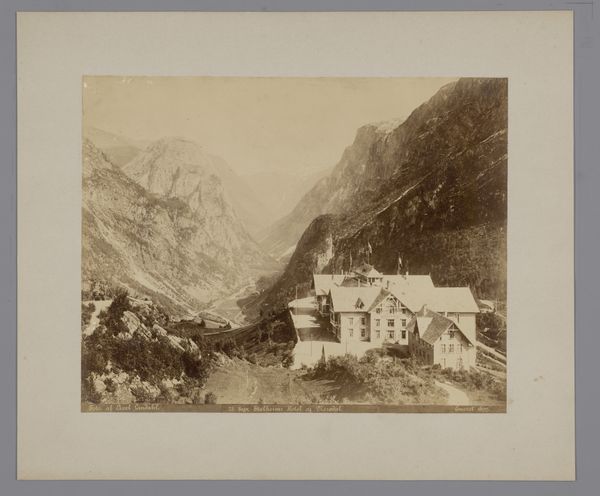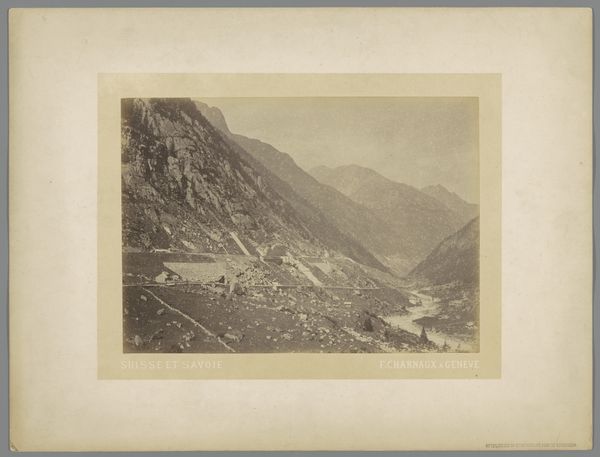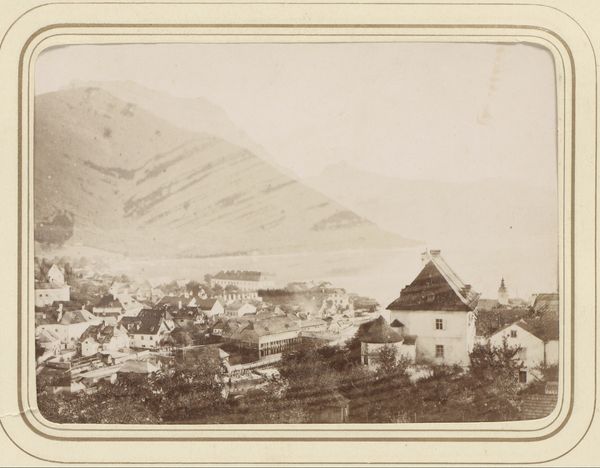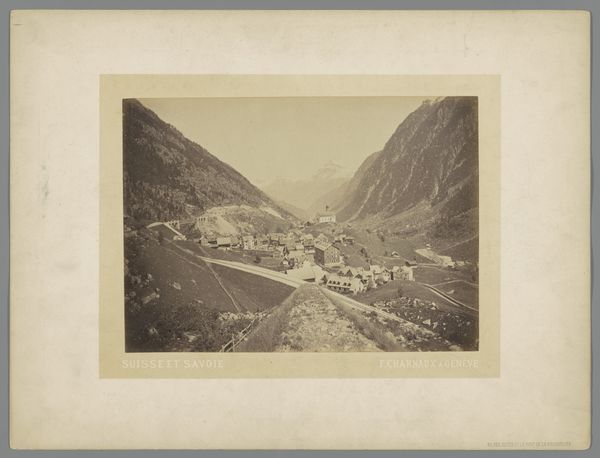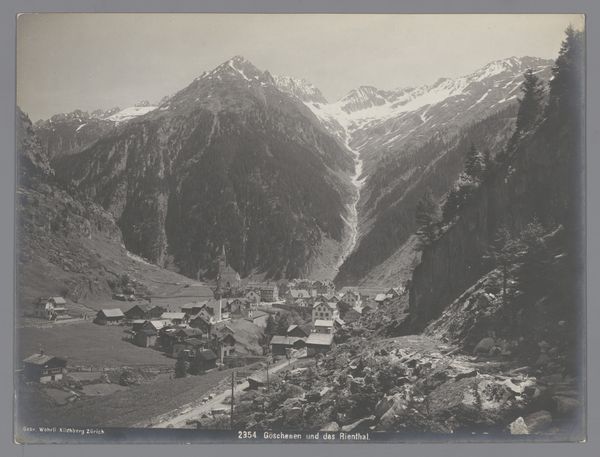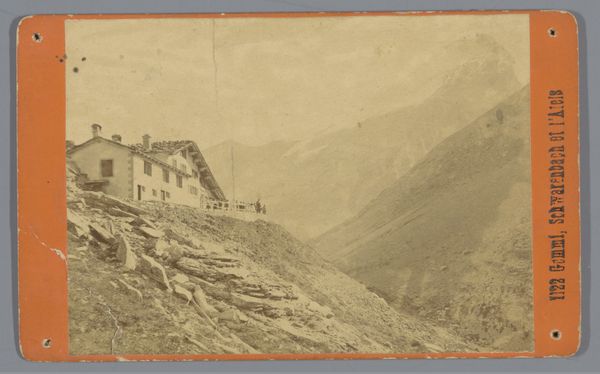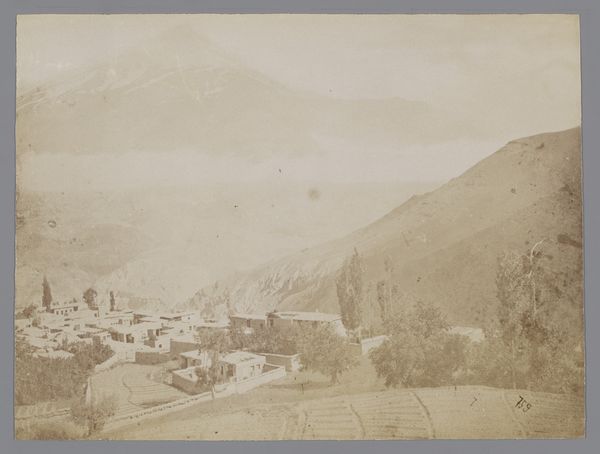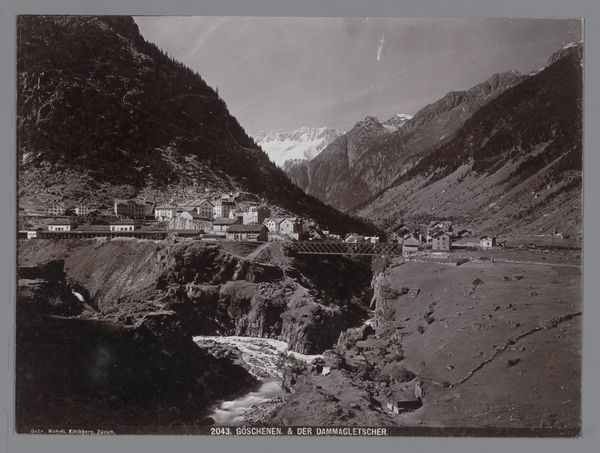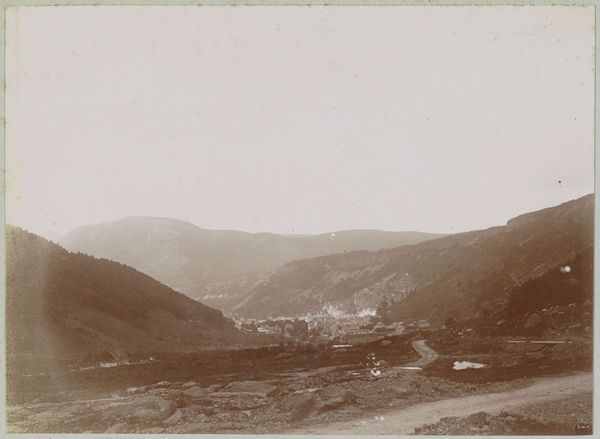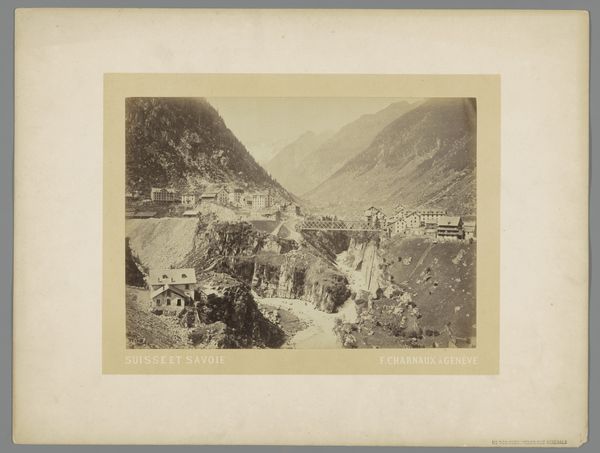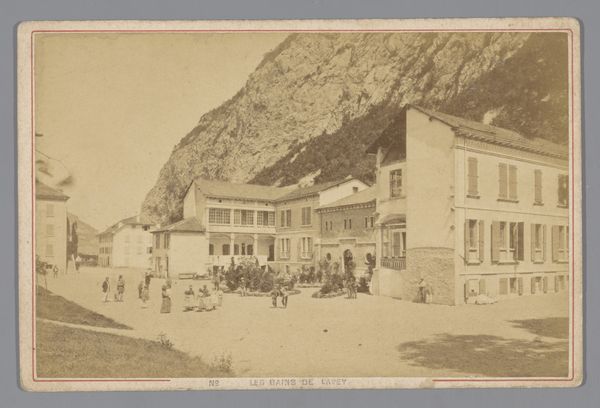
photography
#
pictorialism
#
landscape
#
photography
#
coloured pencil
#
mountain
Dimensions: height 102 mm, width 155 mm
Copyright: Rijks Museum: Open Domain
Editor: Here we have a vintage photograph, “Gezicht op Zermatt en de Matterhorn in Zwitserland,” taken around 1875-1885 by Garcin. It's a stunning view of a village nestled beneath a massive mountain. The tone is so sepia, almost dreamlike. What strikes you when you look at this photograph? Curator: What I see is a document deeply embedded in its colonial moment. Garcin's photograph isn’t just a landscape; it's a carefully constructed representation of power. How might the burgeoning tourism industry of the late 19th century, coupled with the visual rhetoric of landscape photography, contribute to a narrative of dominance over nature and, by extension, over the local populations dependent on that landscape? Editor: I hadn't considered the colonial aspects. So the act of capturing and presenting this scene, even if seemingly innocent, has implications? Curator: Absolutely. Photography, especially landscape photography, has historically been used to reinforce certain ideologies. This image of Zermatt, while beautiful, arguably participates in the commodification of the Swiss Alps as a picturesque playground for Western elites. What is omitted from the frame is just as important as what is included; consider who is controlling the narrative and who benefits from this depiction. Does this romantic view erase local labor or struggles, positioning the landscape as merely a backdrop for leisure? Editor: That’s a really compelling point. It completely reframes how I see the photograph. I initially saw a tranquil scene, but now I recognize layers of meaning. Curator: Exactly. By examining the photograph through the lens of critical theory, we can begin to unpack the power dynamics inherent in its creation and reception. It’s not just about what's there, but *why* it’s there, and whose gaze it caters to. Editor: I will remember to interrogate beyond face value, and investigate its implications. Thank you for sharing your expertise!
Comments
No comments
Be the first to comment and join the conversation on the ultimate creative platform.
